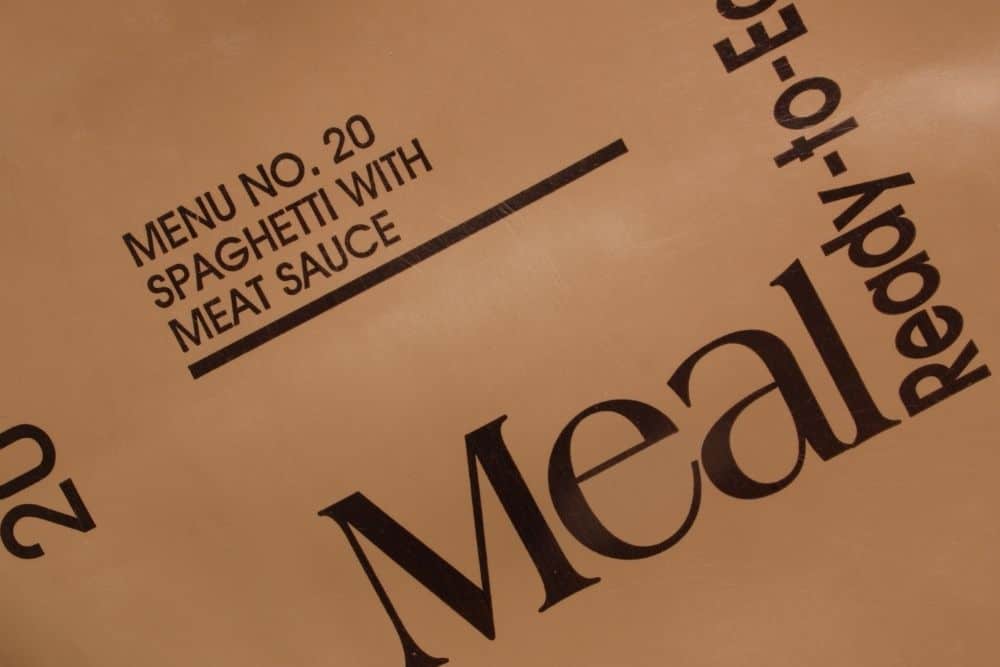MREs are a cornerstone for servicemen and women, outdoor enthusiasts, and the prepared prepper.
For those who work hard and need to survive and flourish, MREs provide all the essentials in a small but mighty package that is easy to carry. One of these flameless ration heaters, often known as an FRH, is a device that allows you to heat your food without using a fire.
So how do MRE ration heaters work, and how do you use them?
Air or water triggers a chemical reaction in both types of U.S. ration heaters, which generates a significant quantity of heat. Using this heat byproduct, food pouches can be quickly warmed to an appetizing temperature.
There are many people I know that eat MREs on a regular basis and have never really tried to use the heater.
Despite what you may have heard, they actually work fairly well and are a simple way to reheat your food while camping. Read on if you want to find out more about these clever devices.
Types of MRE Heaters
As long as you’re packing US-sourced MREs and military-issue ones, you’ll face two types of MRE warmers on the market.
To activate a water-based MRE heater, you’ll need a small amount of clean drinking water. This is true for all military-issued MREs made before 2010.
Heaters like this can be useful, but they can also be dangerous, and they’re a bit slower than the most recent models. This type of MRE warmer is used by placing a meal pouch inside and then supporting it up.
Some commercial MREs, however, have the newest and greatest ration heating technology, which works by interacting with the air and does not require any water to function.
As a pair, they adhere directly to the food pouch, heating it rapidly, completely, and evenly from both ends.
Both will do the job, but if you’re not familiar with either, it’s advisable to familiarize yourself with them.
Using an MRE Heater Safely and Effectively
Regardless of whatever type of MRE heater you choose to use to warm up your pre-cooked meal, they both perform well and are easy to use.
Please note: For the older MRE heaters, you’ll need a small amount of fresh water to get the reaction started and begin warming your food.
Below, you can find detailed instructions for both types.
New Generation U.S. (Air-Reactive)
- MRE’s ration heating pads should both be removed. The side with the sticky layer protected by removable stickers should be inspected to establish which side is on the pad. Air-reactive chemicals are covered on the other side.
- If necessary, remove the MRE entree from the package. Do not open the entrée packet. Toss the packaging away if necessary.
- Remove the sticker very carefully from the adhesive coating of the ration heater. Attach one edge of the entrée bag to the ration heater, and then the other side, using the same process. Make sure both ration warmers are attached securely to the entrée pouch.
- Peel back the covers of each ration heater’s exposed reactive element. Take caution, since heaters may get quite hot in a matter of seconds.
- After around 5 minutes, your meal should be ready to consume. Expended ration warmers, as well as entrée pouches, should be handled with care.
Old Generation U.S. (Water-Reactive)
- Remove the main MRE bag to reveal the entrée box and ration heater. Keep the package containing the entrée bag intact since you will want it for the heating process.
- Open the ration heater’s flap carefully and add water to the designated fill line with clear, clean drinking water. Make sure you don’t overfill the ration heater.
- Before putting the ration heater back into the entrée box, place the entree pouch into the ration heater packet.
- To prevent water from leaking out of the ration heater, prop up the entrée box with any handy item. Something that isn’t susceptible to heat can be used in this case.
- It should be ready to eat in about 10 minutes. During the heating process, the ration heater will generate steam that might cause burns. Use caution when handling the entrée bag and the ration heater.
With any ration heater, the method is uncomplicated and may provide a warm dinner alternative without the need for a fire, regardless of the type of heater you use.
Do These Heaters Really Produce a Hot Meal?
Like many products that are used by members of the armed services, there is likely to be a long history of complaining and griping about it. MREs are no exception, and neither is the ration warmers that reheat them.
Ration heaters, even though their reputation among several soldiers as being clumsy, useless, and not worthy of their weight, are really a dependable and simple choice for heating up meals when a fire is not an option or is just impractical.
However, it should be mentioned that current air reactive ration heaters are substantially superior to the earlier water-reactive models. Improved technology, of course, leads to better outcomes.
Old water-reactive heaters might be fussy if they were incorrectly packed or broken during opening. It can also be tough to make a meal hot enough. You may have to experiment a bit to get it to an acceptable temperature.
Air reactive MRE heaters are superior in this regard, not only because of the greater effectiveness in the chemical reaction that allows them to operate, but also because they directly contact and warm the entrée packet on both sides, ensuring a more uniform dispersion of heat energy.
Regardless of which method you choose, they both work and may be used in the field to heat up a meal quickly.
Safety Considerations
As you may have suspected, any gadget that relies on a chemical reaction powerful enough to cook your supper may pose certain safety risks when it is used negligently or by an inexperienced operator.
Some of the earlier, water-reactive-style MRE heaters, in particular, have certain limitations that may make them inappropriate for specific situations, and these are no exception.
With these old-style heating systems that used magnesium iron powder, hydrogen gas was generated as the result of the chemical process. An explosion might result from the usage of hydrogen gas in a confined environment because of its flammability, which is well-known.
Specifically, these earlier MREs and their warmers were not permitted aboard submarines, airplanes, or in the most sensitive sites because of this. The current generation of MRE heaters does not have this issue.
In addition, both new and previous generation MRE heaters are susceptible to burning exposed flesh when in use. Again, older heaters provide a greater risk due to the large volumes of steam they emit, which can cause burns when handled improperly.
In addition to being more efficient at heating the food, the new heaters also keep the outside of the device colder, minimizing the possibility of it overheating and causing harm.
As long as you’re careful and don’t use the older MRE heaters in an enclosed area, both options are safe.
In Conclusion
The heat generated by an oxidizing chemical reaction in an MRE heater is utilized to warm the entrée pouches.
With or without a fire, MRE heaters of all generations are capable of preparing a hot meal even under the most extreme situations. Most MRE heaters are safe to use, and they’re a great alternative for those who have to work or live in harsh climates for long periods of time.

